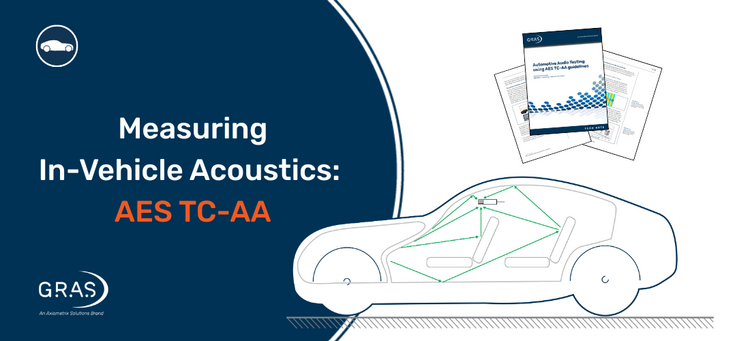Standardizing In-Vehicle Acoustic Measurements with AES TC-AA Guidelines
As electric and hybrid vehicles get quieter and in-cabin entertainment systems more advanced, ensuring accurate and consistent acoustic measurement has become essential. Yet, until recently, there was no shared standard across the automotive industry for measuring or comparing in-car sound performance.
The AES Technical Committee on Automotive Audio (TC-AA) has now published its first set of recommendations for in-vehicle acoustic testing, creating a foundation for repeatable, comparable, and reliable measurements across vehicles and systems.
Why These Guidelines Matter
The AES TC-AA white paper defines key elements to ensure consistent testing across automotive audio systems:
• Core measurements: Frequency response, maximum sound pressure level (SPL), and impulsive distortion.
• Standardized setups: Six-microphone array configuration positioned at the driver’s seat, and other seats, to capture a representative sound field.
• Defined test signals and procedures: Ensuring reliable, comparable data across different vehicles and environments.
By establishing a common methodology, engineers can benchmark acoustic performance, validate system improvements, and enhance the overall in-cabin listening experience.
How to Apply the AES TC-AA Guidelines in Practice
The AES white paper provides clear direction for microphone selection, placement, and data acquisition. In practice, this means using high-sensitivity microphones such as GRAS 46BL-1 or GRAS 46BC capable of capturing low-level in-cabin noise, arranged in a six-microphone array (such as GRAS PR0004) at the vehicle’s seat to represent typical head positions.
Measurement systems should support synchronous multi-channel recording, power averaging across positions, and accurate SPL calibration to ensure repeatable and comparable results.
For engineers implementing these procedures, tools such as1/4” pressure and multifield microphones, dedicated in-cabin arrays, and multi-channel analyzers help streamline setup while meeting AES recommendations for frequency response, SPL, and impulsive distortion tests.
Moving Toward a Common Standard
The AES TC-AA recommendations mark the first step toward a universal standard for automotive acoustic testing. As more OEMs and suppliers adopt them, the industry moves closer to consistent, objective evaluations of in-vehicle sound performance.
Early implementation enables engineers to align with best practices that will shape the future of in-cabin audio quality — from premium sound systems to EV noise management.
Download the Full Technical Note
For detailed measurement setups, microphone configurations, APx project files, and test signal references, Download the full technical note on Automotive Audio Testing using AES TC-AA Guidelines.









